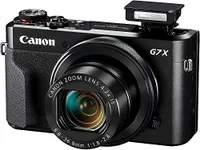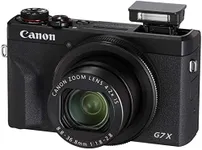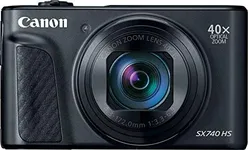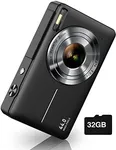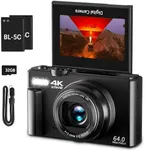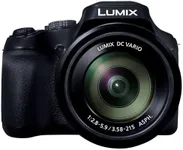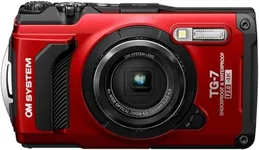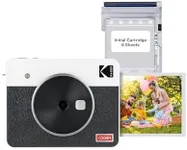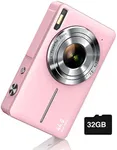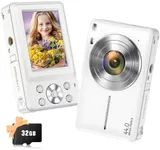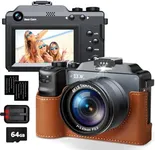Buying Guide for the Best Point and Shoot Cameras
Choosing the right point-and-shoot camera can be a rewarding experience, especially if you know what to look for. These cameras are designed to be user-friendly and portable, making them ideal for casual photography. To find the best fit for you, it's important to understand the key specifications and how they align with your needs. Here are some essential specs to consider when selecting a point-and-shoot camera.MegapixelsMegapixels (MP) refer to the resolution of the camera's sensor, which determines the detail and clarity of your photos. Higher megapixels mean more detail, which is useful for large prints or cropping images without losing quality. For everyday use and sharing on social media, a camera with 12-20 MP is usually sufficient. If you plan to print large photos or need more detail, consider a camera with 20 MP or more.
Zoom RangeThe zoom range indicates how much you can magnify your subject. Optical zoom is more important than digital zoom because it uses the camera's lens to bring the subject closer without losing image quality. A zoom range of 3x to 5x is good for general use, while a range of 10x or more is ideal for capturing distant subjects, such as wildlife or sports events. Choose a zoom range based on the type of photography you plan to do.
Sensor SizeSensor size affects image quality, especially in low light conditions. Larger sensors capture more light, resulting in better image quality and less noise. Common sensor sizes in point-and-shoot cameras include 1/2.3-inch, 1-inch, and APS-C. A 1/2.3-inch sensor is standard for casual photography, while a 1-inch sensor offers better quality and is suitable for enthusiasts. APS-C sensors provide the best quality but are less common in point-and-shoot cameras.
Image StabilizationImage stabilization helps reduce blur caused by camera shake, especially in low light or when using a long zoom. Optical image stabilization (OIS) is more effective than digital stabilization. If you often shoot in low light or use the zoom frequently, look for a camera with OIS to ensure sharper images.
Video RecordingMany point-and-shoot cameras offer video recording capabilities. The resolution and frame rate are key factors to consider. Full HD (1080p) is sufficient for most users, but if you want higher quality, look for cameras that offer 4K recording. Additionally, consider the frame rate; 30 fps is standard, but 60 fps provides smoother motion, which is beneficial for action shots or slow-motion videos.
Battery LifeBattery life determines how long you can use the camera before needing to recharge or replace the battery. It's measured in the number of shots per charge. For casual use, a camera with a battery life of 200-300 shots is usually adequate. If you plan to use the camera for extended periods or on trips, look for a model with a longer battery life or the option to use spare batteries.
ConnectivityConnectivity options, such as Wi-Fi, Bluetooth, and NFC, allow you to easily transfer photos and videos to other devices or share them on social media. Wi-Fi is the most common and useful for transferring files to your smartphone or computer. Bluetooth and NFC can simplify pairing with other devices. If you value convenience and quick sharing, choose a camera with good connectivity features.
Size and WeightThe size and weight of the camera affect its portability and ease of use. Point-and-shoot cameras are designed to be compact and lightweight, making them easy to carry around. If you need a camera for travel or everyday use, look for a model that fits comfortably in your pocket or bag. However, keep in mind that very small cameras may have fewer features or lower image quality.
